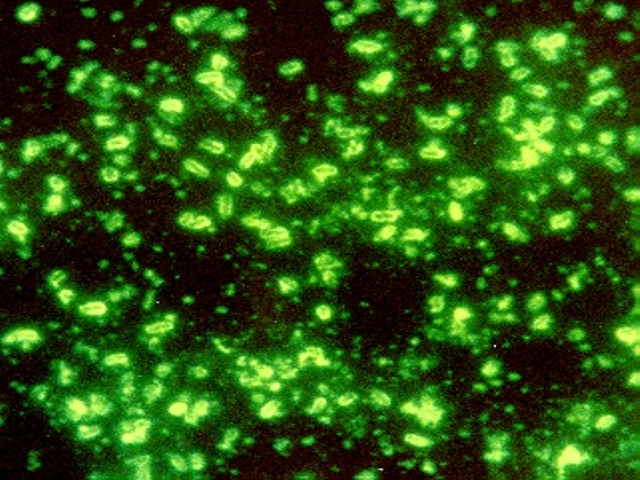When I started writing about research on Yersinia pestis and the Black Death, I was amazed at the ability to recover 14th century bacterial DNA from human remains, show Y. pestis was the caustive agent of the Black Death and then sequence the strain to compare to modern Y. pestis strains. The publications I read always mentioned the three waves of pandemics that devastated human populations in the introduction, and the Black Death was not the oldest one. The putative first pandemic was the Plague of Justinian in the 6th century, named after the Byzantine emperor. Like with the Black Death, there is debate about whether Y. pestis is the causative agent of the Plague of Justinian. The research published in PLOS Pathogens built on earlier work to isolate and genotype the suspected Y. pestis causative agent from human remains in 6th century graves, but this time with more stringent protocols enacted to answer critics who questioned the authenticity of earlier results.

Two of the scientists who contributed to the PLOS Pathogens article had published previously on Y. pestis DNA isolated from human remains in the Aschheim cemetery in Bavaria, Germany, that dated to the 6th century and was believed to contain victims of the Plague of Justinian. Like the Black Death, the Plague of the Justinian resulted in high mortality as it spread across Europe. For this study, Harbeck et al. used teeth from 19 individuals in 12 group burial sites in the Aschheim cemetery. These sites were dated to 525–680 by archeological methods and confirmed to the same time period by radiocarbon dating of human remains from three of the burial sites.
Two laboratories that deal with ancient DNA samples, one newly built, isolated and amplified segments of the plasminogen activator gene (pla), a gene found on the Y. pestis-specific multicopy pPst plasmid. A 70-nucleotide (nt) segment was amplified using qPCR while a 133nt segment was amplified by conventional PCR. Scientists amplified the 70nt pla region from eight samples using qPCR and the longer segment from two samples using conventional PCR. In a separate lab, four individuals were selected for amplification of a 148nt pla segment using conventional PCR; pla was amplified successfully from only one individual. This individual sample was one of the two from which both regions were amplified in the other lab.
With eight samples that positive pla amplifications, Harbeck et al. attempted to genotype the the Y. pestis strain. However, only one individual, the one that was positive for pla in all three PCR assays, was reproducibly amplified at the five single-nucleotide polymorphisms (SNPs) used for genotyping. The selected SNPs were nodes along the main branch from Y. pseudotuberculosis, the ancestor to Y. pestis, to the Black Plague strain along the Y. pestis phylogeny (authors used the phylogenetic tree from reference 2). Determining whether the SNPs matched or differed from the reference ancient strain Mictrotus 91001, the authors placed the Plague of Justinian strain between a known strain from Mongolia and a position two nodes earlier than the Black Death. The latter is not surprising since the Plague of Justinian predates the Black Death by several centuries. Based on the relatedness of the Plague of Justinian and the Mongolian strain MNG 2972, the authors concluded that the Plague of Justinian originated in Asia.
Was the Plague of Justinian caused by Yersinia pestis? This research demonstrates that humans buried during this time in Germany were infected with an ancient strain of the plague, one that phylogenetically lies closer to the ancestral strain than the Black Death strain. However, evidence from additional grave sites and more genotyping and sequencing coverage would add to our knowledge of the evolution of this human pathogen and enable researchers to refine the placement of the Plague of Justinian along the Y. pestis phylogeny. I wonder what other pieces of history might be revealed as we isolate and genotype ancient strains of human scourges.
References
1. Harbeck, M., Seifert, L., Hänsch, S., Wagner, D.M., Birdsell, D., Parise, K.L., Wiechmann, I., Grupe, G., Thomas, A. and Keim, P. (2013). Yersinia pestis DNA from Skeletal Remains from the 6th Century AD Reveals Insights into Justinianic Plague, PLOS Pathogens, 9 (5) e1003349. doi: 10.1371/journal.ppat.1003349.t004
2. Cui, Y., et al. (2013) Historical variations in mutation rate in an epidemic pathogen, Yersinia pestis. Proc. Natl. Acad. Sci. USA 110, 577–582. doi: 10.1073/pnas.1205750110.
Sara Klink
Latest posts by Sara Klink (see all)
- A One-Two Punch to Knock Out HIV - September 28, 2021
- Toxicity Studies in Organoid Models: Developing an Alternative to Animal Testing - June 10, 2021
- Herd Immunity: What the Flock Are You Talking About? - May 10, 2021
